Drawings from the camps in the occupied Dutch East Indies (1942-1945) > Education, religion and leisure
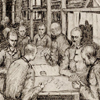
There were opportunities for education and to conduct church services in the camps, although it was left to the internees to organize these activities. Leisure activities were also left to the inmates’ initiative. The simplest thing to do, and moreover something that did not entail any material costs, was singing. Everywhere, choirs shot up like mushrooms. Singers and listeners derived much pleasure from singing. A number of camps had a small orchestra and some of them their own theatre and cabaret company. Starting in 1944, the regime became more severe and in many camps it was henceforth forbidden to, for instance, play cards or make music. The Japanese also issued a ban on gatherings, which made it impossible to have church services any longer. Sometimes the camp management turned a blind eye on such services. In other camps, small groups were still allowed to gather for prayers or for Bible study.
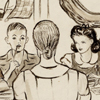
As far as education was concerned, children were better off in a camp for men than in a women’s camp. There were more professional teachers to be found among the men and they were sometimes exempted from other work. Specially in 1942 and 1943, entire schools were set up despite the lack of educational tools and the shortage of paper and writing materials. In the women’s camps, in was in many cases the mother who taught her own children, whenever possible with the support of a schoolmistress.
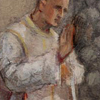
Many internees sought and found comfort in faith, including some people who had not gone to church before the war. Most often, there was a minister or a priest in the camps for men – be they civilians or prisoners of war – and, therefore, it was possible to conduct services in these camps, whether legally or not. The women’s camps lacked such possibilities, but the Protestant women addressed their spiritual needs by organizing clubs for Bible study, whilst Catholic women could turn to the many interned nuns for support.

Courses and lectures were organized for the adults, their topics depending on the expertise to be found among the internees. Libraries were established with the books that the internees had brought to the camps.

Of course, there were also musicians among the internees. They had been allowed to take their instrument with them. As a result, orchestras were set up in many camps and concerts were given. The inmates also organized revues, cabaret shows and theatrical performances. The conditions under which the inmates had to rehearse were not the same everywhere. In some camps the inmates had to make all the preparations in the greatest secrecy, while the camp commander leniently looked the other way round when the performance took place. In other camps rehearsals took place openly and the Japanese watched the performance from the first row. In Chungkai, along the Burma railway, the internees had even built a theatre in which performances were given every Friday and Saturday night.

The Japanese had little objections to drawing and handicrafts. They even sometimes had internees make a drawing in exchange for some extra food or for the normal wages of 15 guilder cents a day. However, paper for drawing and materials for handicraft were scarce.
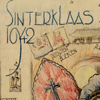
Holidays were always celebrated as normally as possible. It gave the inmates a feeling of togetherness and made for a change. Christmas and New Year’s celebrations were allowed almost everywhere. On the occasion of birthdays, the inmates went visiting and brought along a drawing, a piece of fabric with embroidered signatures or any other handiwork. The Queen’s anniversary, a national holiday in the Netherlands, was on 31 August at the time, but no celebrations were allowed on that day.
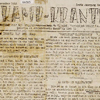
There was a great need in the camps for news from the outside. How was the war progressing? How were family members doing back home in the Netherlands? Contacts with the outside world were extremely limited. Correspondence with relatives was restricted. Sending a card was allowed on rare occasions, but it had to be written in Malay or English. Out of ten standard sentences, the internees could choose two or three, to which they could add twenty free words; everything was censored. In the beginning, “The Voice of Nippon”, a Japanese periodical written in English, was still distributed. It gave a fairly accurate picture of how the war was progressing in Europe, but was far from objective where Asia was concerned. Radios were not allowed, though an illegal set was sometimes hidden somewhere. It goes without saying that the papers published in some camps did not include much news from the outside. As a result of this lack of information, the camps buzzed with rumours about how the war was progresing. Peace was always nearby. This kept hope alive.
>> Read on: Organisation of the camps
<< Ga terug naar: Life in the camps
